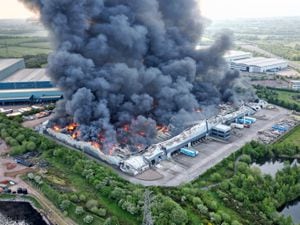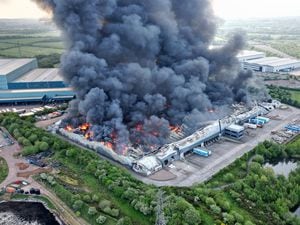County council cuts carbon dioxide emissions by 25 per cent
Staffordshire County Council has cut its carbon dioxide emissions by a quarter since declaring a climate emergency.

Local authorities across Staffordshire have pledged to take action to tackle climate change in recent years, including setting targets for becoming carbon neutral in the years to come.
Staffordshire County Council declared a climate emergency in July 2019. The authority’s latest Strategic Plan, which covers the 2022-2026 period, has revealed how its climate change work is progressing.
The document said: “Climate change is affecting more people’s lives every year and we all need to act fast, to do our bit to slow and reverse the damage being done. We have a leading role to play in Staffordshire by reducing carbon dioxide emissions from our operations, as well as working with industry and other organisations to help lower their emissions and make our county more resilient to climate change.
“In 2019 the county council declared a climate change emergency and set a target to achieve net zero emissions by 2050. Since then we have reduced our CO2 emissions by 25 per cent and published annual action plans outlining how we will meet our net zero target.
“Our plan is ambitious and not without challenges. The latest plan, agreed in October 2021, outlines five key themes for action: carbon reduction, air quality, natural environment, waste and behaviour change.”
Council leader Alan White welcomed the progress on tackling climate change as well as highlighting the Staffordshire Warmer Homes scheme at a scrutiny committee meeting this month.
He said: “I’m very pleased about the 25 per cent reduction in CO2 emissions that we’ve witnessed over the last few years and we’ve got plans in place to bring that forward.”
He said: “We’ve seen lots of homes getting insulation put in, much to my frustration when seeing the Insulate Britain people gluing themselves to various places up and down the country when this is going on in Staffordshire.
“We need to do it at a greater pace – I concede that fact and that is something to pick up on.”
Councillor Charlotte Atkins, leader of the opposition group, said: “We’re facing an energy crisis in terms of bills etc, particularly come April. What is the Staffordshire Warmer Homes programme doing to try to meet that crisis and particularly to focus on those people who are going to be plunged into fuel poverty for the first time and families who will have to make a decision between heating and eating?
Councillor White responded: “Your point about the rising price of fuel is a well-made point, and it is not one that Staffordshire County Council can answer. There is a series of decisions that are required by national government.
“It’s not one that Staffordshire County Council can directly influence and it would be incorrect of me to suggest the Staffordshire Warmer Homes Initiative can insulate homes to the extent that they require significantly less fuel to heat – ergo that people aren’t going to go into fuel poverty.
“I can’t because the deliverability of the Staffordshire Warmer Homes scheme isn’t at that pace. And I’m not sure, even with the best will in the world, however well we insulate a home, we are going to reduce the requirement to heat it to the extent fuel bills will stay the same. That isn’t going to happen.”





